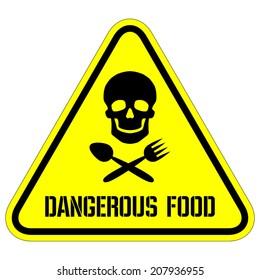Scientists have issued a stark warning following the discovery of a concerning hazard hidden within the global food supply, raising alarms about its potential to trigger far-reaching consequences for public health and safety. The newly identified risk, uncovered through recent research, has prompted calls for immediate action from authorities and industry leaders to mitigate its impact. As investigations continue, experts emphasize the urgent need for awareness and intervention to protect consumers worldwide.
Scientists Reveal Highly Contaminated Food Sources Threatening Public Health
Recent investigations conducted by a team of international scientists have exposed alarming levels of contamination in several widely consumed food sources. These pollutants, primarily heavy metals and synthetic chemicals, have been detected in quantities well above safety thresholds, raising immediate concerns about their long-term impact on human health. The findings suggest that routine exposure could contribute to a range of chronic illnesses, including neurological disorders, cancers, and developmental defects in vulnerable populations such as children and pregnant women.
Key contaminated food categories identified include:
- Seafood harvested from industrialized coastal regions
- Staple grains affected by polluted irrigation sources
- Leafy green vegetables grown near urban waste sites
- Processed food items containing synthetic additives
To better understand the scale of contamination, here is a focused summary of pollutants detected in common food items:
| Food Source | Primary Contaminant | Concentration Level | Health Risk Category | |||||||||||||||||||||||||
|---|---|---|---|---|---|---|---|---|---|---|---|---|---|---|---|---|---|---|---|---|---|---|---|---|---|---|---|---|
| Atlantic Salmon | Mercury | 0.7 ppm | High | |||||||||||||||||||||||||
| Brown Rice | Arsenic | Experts Detail Potential Long Term Impact of Hazard on Global Food Safety
Leading scientists have raised alarms over a newly identified contaminant that could have profound effects on global food safety standards. This emerging hazard is believed to persist through conventional processing methods, potentially entering human consumption chains undetected. Experts emphasize that the resilience and widespread nature of the contaminant threaten not only consumer health but may also degrade trust in food supply systems worldwide. Key concerns highlighted by the panel include:
Calls for Immediate Regulatory Action and Enhanced Monitoring to Prevent CrisisLeading experts urge swift intervention, emphasizing the urgent need for government agencies to implement stricter controls and continuous monitoring of food production and distribution chains. As the hidden hazard silently infiltrates various products, authorities face mounting pressure to establish transparent reporting frameworks and deploy advanced detection technologies. Failure to act promptly risks triggering a public health crisis with wide-ranging socio-economic effects. Key measures advocated by the scientific community include:
|
